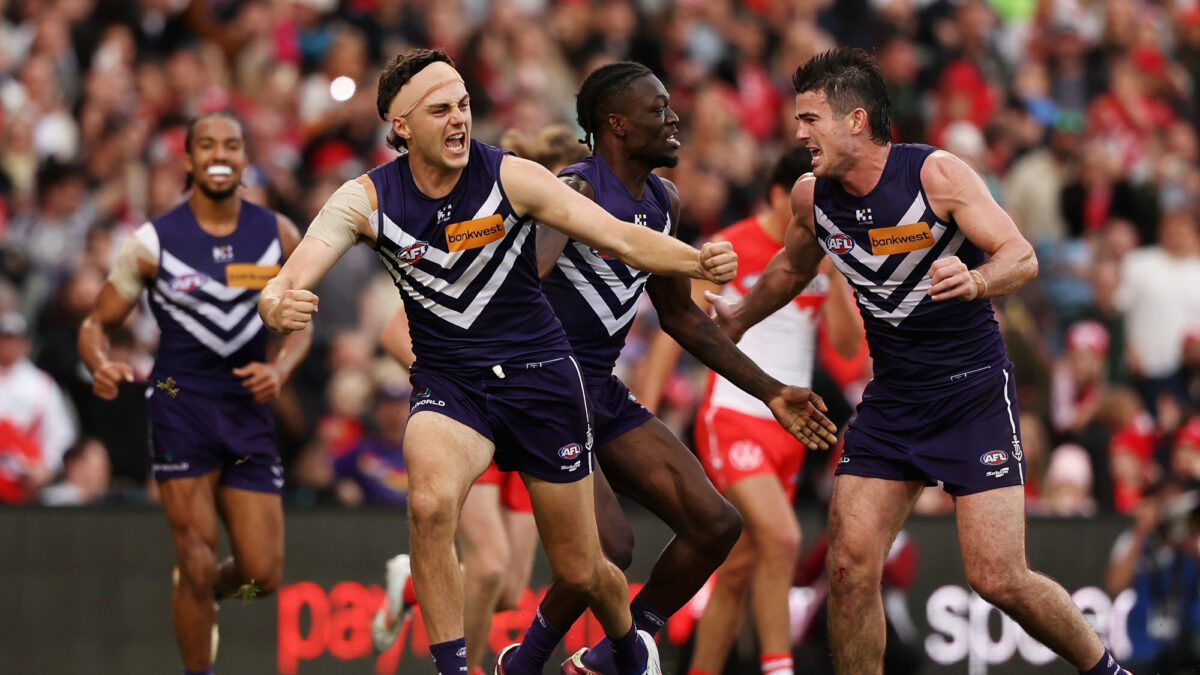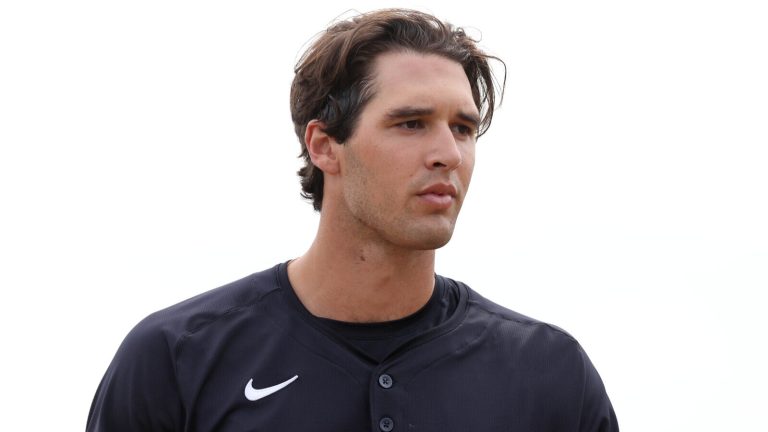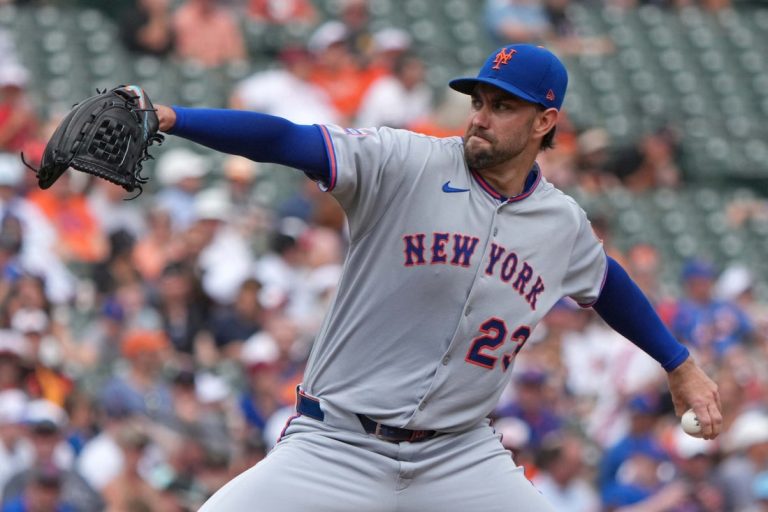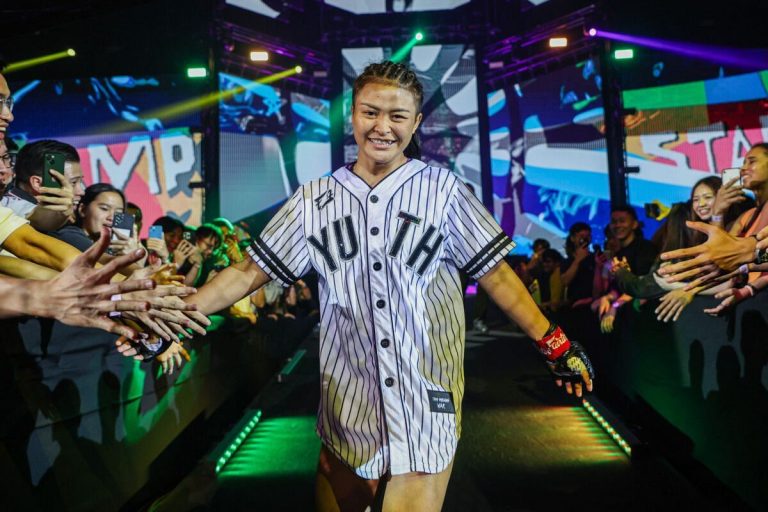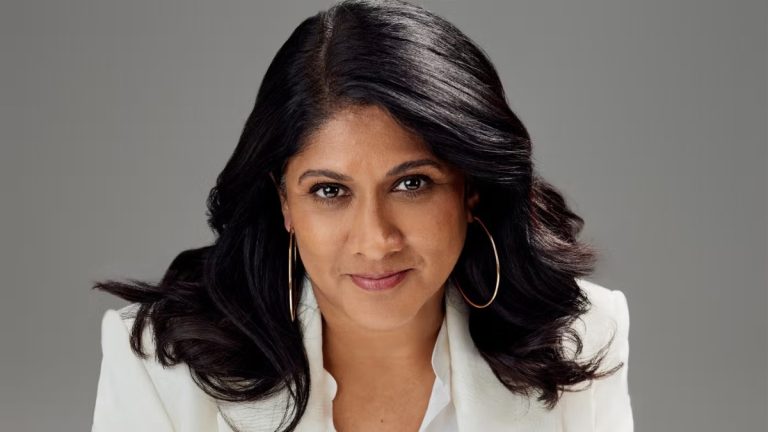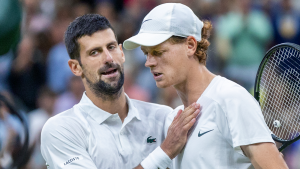The enormity of Saturday night’s clash with Hawthorn won’t be lost on Fremantle.
But for as long as they’re still in contention to play finals, they remain a top four chance of winning the whole thing.
This is a good team. Don’t let personal issues between elements of the media and coach Justin Longmuir dictate otherwise, nor the predictable desire to sound the death knell on the Dockers as a whole that comes through social media on an almost metronomic basis after every loss.
Fremantle had won six games in a row prior to last week; the loss to Sydney was disappointing, but we couldn’t possibly sit in a state of shock that last year’s grand finalists, with a host of stars back and immediately looking better structured and much more capable, came away as victors at home.
It doesn’t exonerate Longmuir or his team from the footballing faux pas they committed: particularly in the first half but indeed throughout the game, their centre square defence was abhorrent and the ease in which Sydney scored from these stoppages was bad.
But to label Longmuir as tactically inflexible, or to criticise the team for not defending space well enough, is to try and apply a single label to a complex game.
The criticism usually has an underlying message: the Dockers always just try and play the same way and cannot adjust. That’s simply not true.
Even amid the Swans’ dominance, we saw the Dockers in the last quarter and a half try and defend more narrowly in the corridor, inverting their flankers at times to rush and stop the easy exits.
The simple move of subbing on Jaeger O’Meara for Pat Voss made all the sense in the world and it instigate a necessary flip, where the defensive integrity of stoppage situations was improved and the offensive ball movement was made far easier and more efficient.
It’s probably worth noting the subbing of Voss was clear and necessary, but also a clear sign that for the sake of the team make-up, despite the headlines, the Dockers don’t necessarily have a Sean Darcy/Luke Jackson problem – they have a Voss/Jye Amiss problem.
Voss is a wonderful cult figure who has earned his position in the AFL, but he is a beneficiary of the non-statistical aspect of Amiss’ game, while Amiss himself doesn’t benefit from Voss’ inclusion.
Amiss hasn’t had a particularly good season, but he still attracts the attention of the second key defender most weeks. He’s never going to be a high-quantity player in terms of disposals, but his leading patterns are what create space for teammates. Even without hitting the scoreboard in recent times, he has had a few goal assists and a few more ‘hockey assists’. His willingness to chase his opponent goes under the radar too.
Voss is much more of a wildcard, which is good and bad. His tackling numbers are impressive, but they tend to be capturing those in his vicinity, rather than chasing. He can swoop on a ground ball, but he might be the one who caused it to come to ground in the first place. His own leading patterns aren’t a strength and at times he gets in the way.
At full strength, Voss can’t make the cut this season, and it seems like Longmuir is aware of this. With Hayden Young due to return, a decision will have to be made, and Amiss’ function in this team is far too important to leave out.
Departing that sidetrack, the notion that the Dockers simply have not or cannot evolve under Longmuir is silly.
Last year, they were a highly uncontested team (ranked 17th for contested possession rate) and were 16th for metres gained per disposal.
They just tried to hold the ball before taking the game on. They were good at it, too: when they chose to attack, no team used the handball game better, carving up the opposition and then finding targets inside 50 – only three teams found marks in the forward arc more.
Fremantle can still play that way, but Longmuir understood that he needed to make adjustments after missing out on September action with a late-season capitulation.
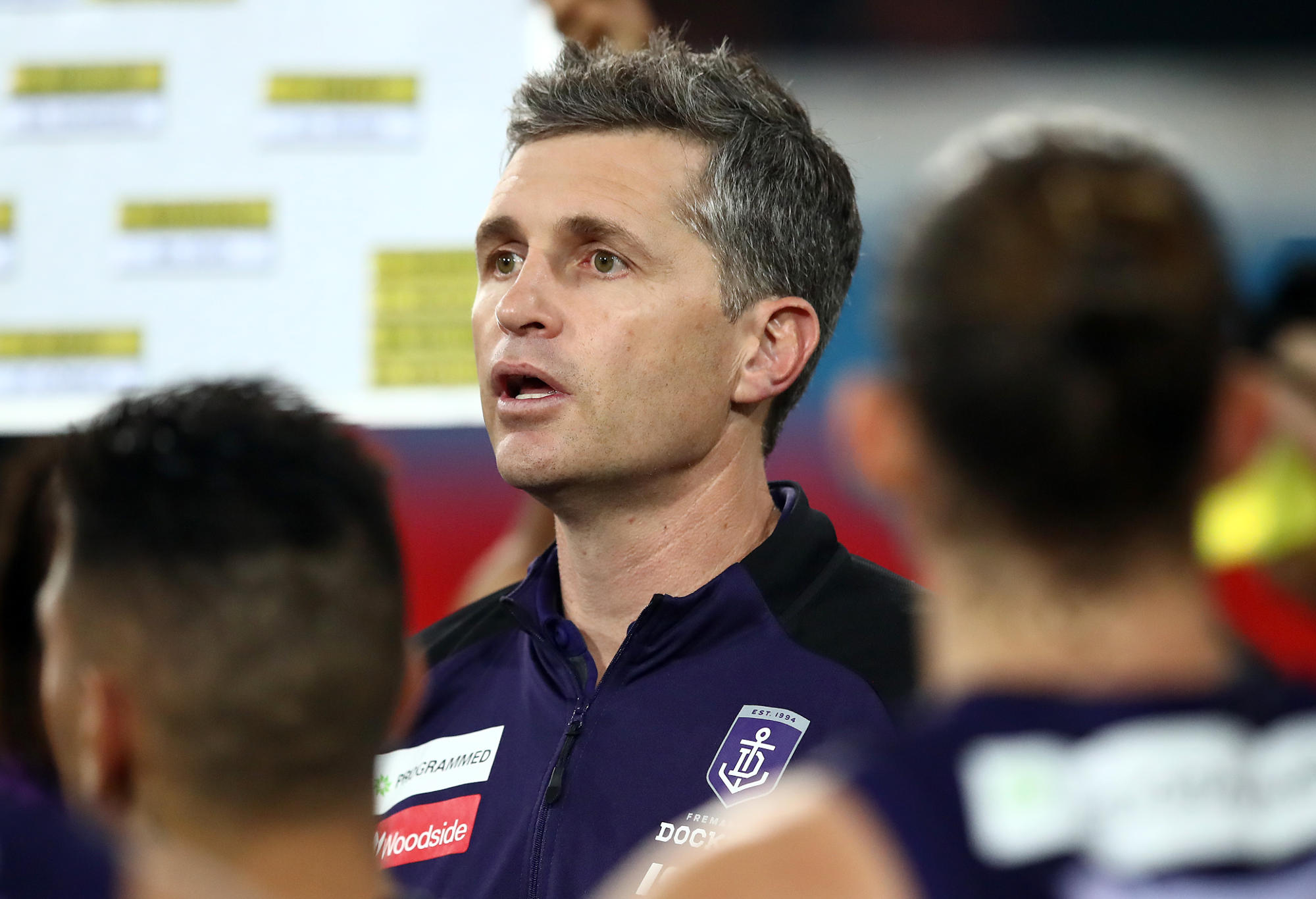
Justin Longmuir. (Photo by Jono Searle/AFL Photos/via Getty Images )
If one was to only follow the media narrative and then check results, they might actually believe the Dockers haven’t changed. They’re ninth, coming off a loss and the butt of media jokes. Some even think they’re dull – that has stuck since the Ross Lyon days, which even then wasn’t all true.
But they’re nothing like last season, or like the misconceptions.
The Dockers are averaging over 20 fewer disposals per game, to plummet from fourth in the league to 16th this season. In contrast, they’ve upped their inside 50s from 51 per game to 53.2 per game despite this. That’s pretty attacking.
Their contested possession rate is up to 38.7 per cent this year, above league average. They’re sixth for metres gained per disposal. This directness has elevated Jordan Clark to the top tier of half-back flankers in the league.
The emphasis this season has mainly been on trying to improve field position, which helps with generating more scores out of the forward half. Where last year, Freo were more content in playing deeper and selectively moving the ball quicker, this season, they’ve opted to attack the contest head on and play a more kamikaze style.
This year’s tactics are a little riskier: they are less able to hit targets in attack, with the priority just getting it in there. There’s also that space problem with Voss that has crept in a bit recently – they’ve actually dropped off to being the worst marking team inside 50.
Defensively, they’re holding up similarly, although the shift in this style of play has really increased the tackling and pressure numbers of their opposition. By not controlling the game with uncontested marks and slowing it down as frequently, the Dockers are under pressure more with their disposals, and in some games, they’re being scored against more heavily than previously.
But with improved field position, when they’ve got the game on their terms, they can position Luke Ryan as a sweeper out back while their midfielders and defenders can maintain their structure while running back. They’re a well-oiled machine.
Right in front of our very eyes has been a complete tactical transformation, but apparently looking into the minutiae is too difficult or inconvenient for brands who simply want to judge on a result.
All of this is simply developmental steps towards the bigger picture: the Dockers are, in fact, contenders. Even right now.
Will they lose games? Sure – they’re not infallible – but who is? Maybe it sticks out more in purple.
Some don’t want to credit Longmuir with having cards up his sleeve. That feels a bit personal.
You want adjustments? Their own inefficiency cost them against Collingwood, but they nearly beat the Magpies with a combination of the uncontested possession, high-marking style of last year and the field position focus they’re employing in 2025.
They smashed GWS the next week by winning contested ball away from home, and they did the same a fortnight later when traveling to the Gold Coast.
Saturday’s challenge is big. Hawthorn are arguably the best structured team in the AFL. Round 18 offers Longmuir the opportunity to show the tactical diversity he has employed at the Dockers, with many an interested party likely to be watching on.
It isn’t the end of the world if they lose, but a win here would certainly ease the negative narrative on him and his club.
More than anything though, this in itself has the potential to be a second or third-week September preview between two really good teams.
The confidence should be unwavering, and trusting the process will hold the flexible Dockers in good stead as premiership contenders in 2025.
